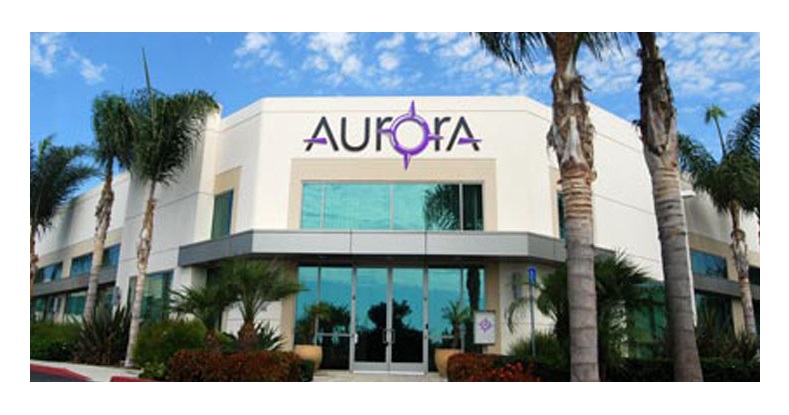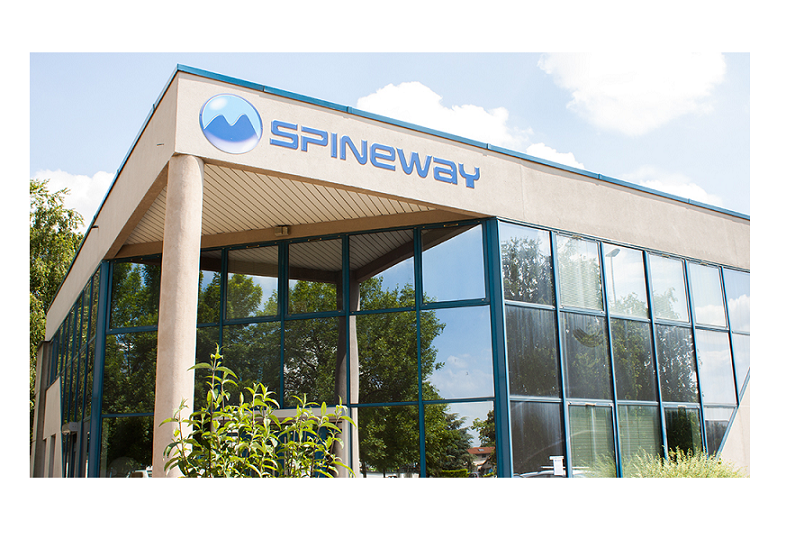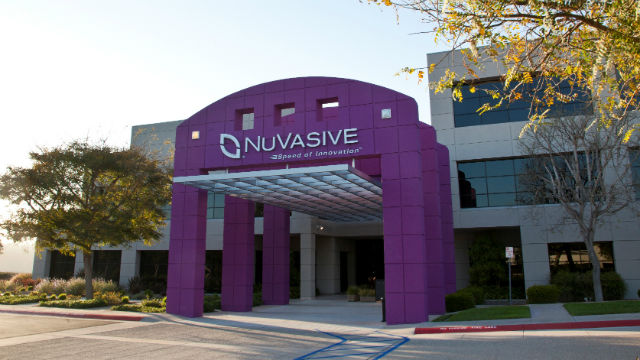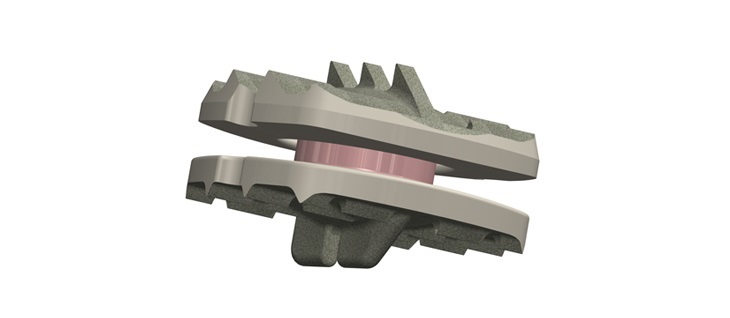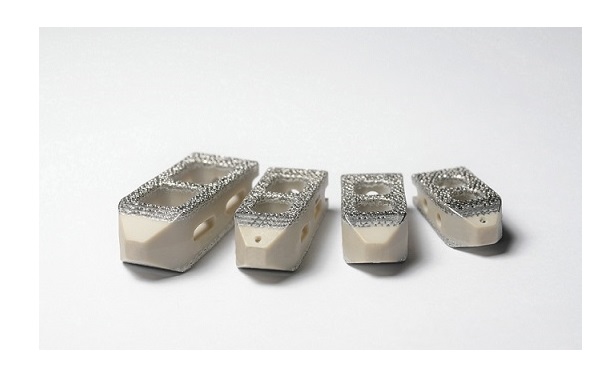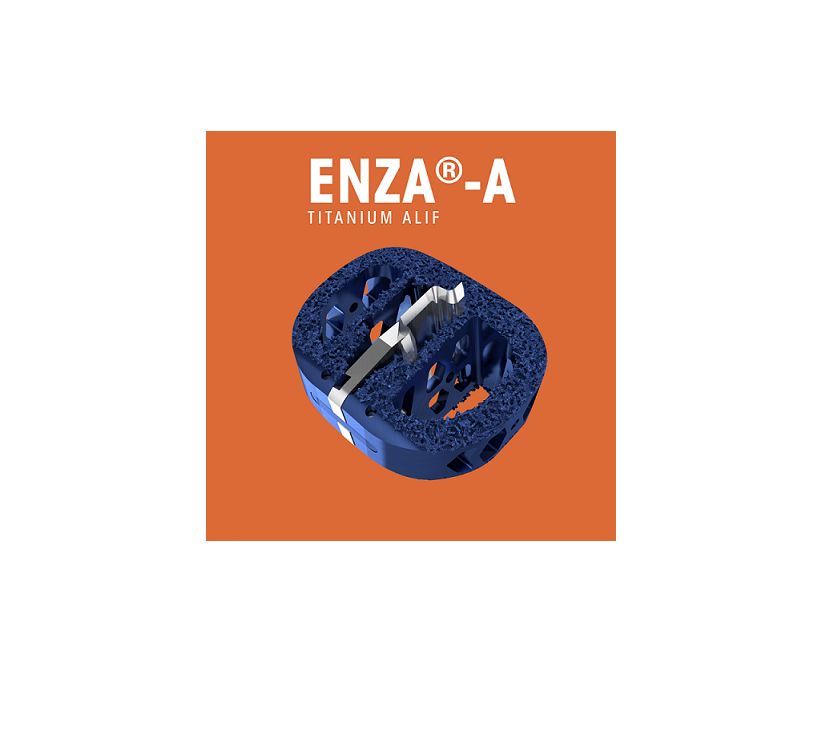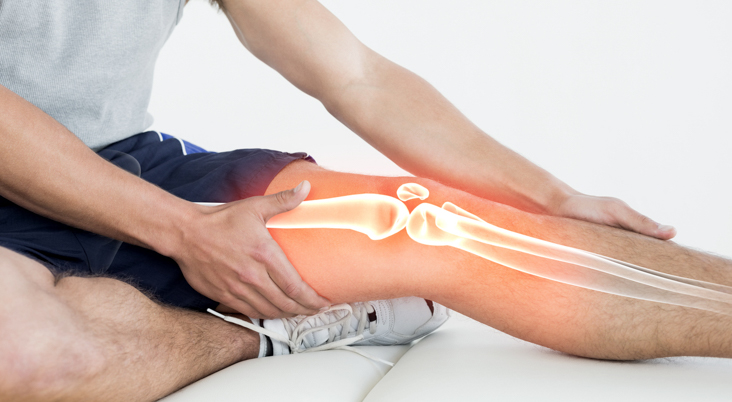BELGRADE, MT, Nov. 14, 2018 (GLOBE NEWSWIRE) — Xtant Medical Holdings, Inc. (NYSE American: XTNT), a leader in the development of regenerative medicine products and medical devices, today reported financial and operating results for the third quarter ended September 30, 2018.
Third Quarter 2018 Financial Highlights and Recent Announcements:
- Revenue for the third quarter of 2018 was $17.3 million, compared to $19.8 million for the third quarter of 2017
- Gross profit for the third quarter of 2018 was 66.7%, compared to 57.5% for the same period in the prior year
- Net loss incurred in the third quarter 2018 was $3.2 million compared to a loss of $8.5 million for the same period in the prior year
- Non-GAAP Adjusted EBITDA was $1.5 million, compared to $1.4 million for the same period of the prior year
- As previously announced, the Company appointed Michael Mainelli as Interim Chief Executive Officer and Kathie Lenzen as Senior Vice President, Finance & Administration and Chief Financial Officer
Xtant Interim CEO Michael Mainelli said “After my first few weeks on the job, it’s clear to me that Xtant is a company with great products, strong business partners, and talented employees. We are pleased that we are starting to see the benefits of the recent facility consolidation efforts and cost reduction initiatives. At the same time, our sales results are below our potential. We are working on plans that are expected to improve sales through a combination of new products, marketing programs, and more effective channel management.”
Third Quarter 2018 Financial Results
Revenue for the third quarter of 2018 was $17.3 million, compared to $19.8 million in the same period last year. This decrease occurred primarily due to company-initiated discontinued distributor arrangements and channel management challenges.
Gross profit for the third quarter of 2018 was 66.7%, up from 57.5% for the same period in 2017. This improvement is largely due to expenses for inventory reserves and impairment of surgical instrument asset values in the third quarter of 2017 that did not recur in 2018, and favorable impacts from cost reduction initiatives.
Operating expenses for the third quarter of 2018 were $13.0 million, a decrease of $3.1 million compared to $16.1 million in the quarter ended September 30, 2017. The reduction is primarily due to lower commission expense as a result of lower revenue due to discontinued distributor arrangements and channel management challenges. In addition, the Company continued to execute its cost reduction initiatives to consolidate facilities used for biologics and fixation systems operations.
Net loss from operations for the third quarter of 2018 was $3.2 million, or $0.24 per share, compared to a net loss of $8.5 million, or $5.62 per share, for the same period in the prior year, primarily the result of the reduced operating expenses and lower interest expense, and in the case of the net share decrease, increased shares outstanding during the current year period.
Non-GAAP Adjusted EBITDA for the third quarter of 2018 was $1.5 million compared to $1.4 million for the same period during 2017. Non-GAAP Adjusted EBITDA for the nine-month period ended September 30, 2018 was $3.4 million, compared to a loss of $0.8 million in the same period in the prior year. The Company defines Adjusted EBITDA as net income/loss from operations before depreciation, amortization and interest expense, and as further adjusted to add back in or exclude, as applicable, non-cash compensation, change in warrant derivative liability, separation related expenses, litigation reserve, facility consolidation costs and restructuring expenses. A calculation and reconciliation of non-GAAP Adjusted EBITDA to net loss can be found in the attached financial tables.
Amendments to Credit Facility and Issuance of Warrants
On September 17, 2018, the Company announced the execution of 24th and 25th amendments to its Amended and Restated Credit Agreement, which, among other provisions, reduced interest payable under the credit facility. In connection with the 25th amendment, the Company issued warrants for the purchase of 1.2 million shares of Xtant common stock with an exercise price of $0.01 per share and an expiration date of August 1, 2028, to OrbiMed Royalty Opportunities II, LP and ROS Acquisition Offshore LP, which collectively own approximately 70% of Xtant’s outstanding common stock and are the sole holders of the Company’s outstanding long-term debt under the credit facility.
Conference Call
The Company will host a webcast and conference call to discuss the third quarter 2018 financial results on Wednesday, November 14, 2018 at 4:30 PM ET. To access the webcast, Click Here. To access the conference call, dial 877-407-6184 within the U.S. or 201-389-0877 outside the U.S. A replay of the call will be available at www.xtantmedical.com, under “Investor Info.”
About Xtant Medical Holdings, Inc.
Xtant Medical Holdings, Inc. (www.xtantmedical.com) is a global medical technology company focused on the design, development, and commercialization of a comprehensive portfolio of orthobiologics and spinal implant systems to facilitate spinal fusion in complex spine, deformity and degenerative procedures. Xtant people are dedicated and talented, operating with the highest integrity to serve our customers.
™ and ® denote trademarks and registered trademarks of Xtant Medical Holdings, Inc. or its affiliates, registered as indicated in the United States, and in other countries. All other trademarks and trade names referred to in this release are the property of their respective owners.
Non-GAAP Financial Measures
To supplement the Company’s consolidated financial statements prepared in accordance with U.S. generally accepted accounting principles (GAAP), the Company uses certain non-GAAP financial measures in this release, including Adjusted EBITDA. Reconciliations of the non-GAAP financial measures used in this release to the most comparable GAAP measures for the respective periods can be found in tables later in this release. The Company’s management believes that the presentation of these measures provides useful information to investors. These measures may assist investors in evaluating the Company’s operations, period over period. Management uses the non-GAAP measures in this release internally for evaluation of the performance of the business, including the allocation of resources. Investors should consider non-GAAP financial measures only as a supplement to, not as a substitute for or as superior to, measures of financial performance prepared in accordance with GAAP.
Important Cautions Regarding Forward-looking Statements
This press release contains forward-looking statements within the meaning of the Private Securities Litigation Reform Act of 1995. Forward-looking statements include statements that are predictive in nature, that depend upon or refer to future events or conditions, or that include words such as ‘‘expects,’’ ‘‘anticipates,’’ ‘‘intends,’’ ‘‘plans,’’ ‘‘believes,’’ ‘‘estimates,’’ “continue,” “future,” ‘‘will,’’ “potential,” similar expressions or the negative thereof, and the use of future dates. Forward-looking statements in this release include the Company’s plans to improve sales through a combination of new products, marketing programs, and more effective channel management. The Company cautions that its forward-looking statements by their nature involve risks and uncertainties, and actual results may differ materially depending on a variety of important factors, including, among others: the Company’s future operating results and financial performance; its ability to increase revenue, remain competitive and innovate and develop new products; the effect of management changes and ability to engage and retain qualified personnel; government and third-party coverage and reimbursement for Company products, ability to obtain and maintain regulatory approvals; government regulations; product liability claims and other litigation to which the Company may be subject; product recalls and defects; timing and results of clinical studies; the ability to obtain and protect Company intellectual property and proprietary rights and operate without infringing the rights of others; the ability to service Company debt and comply with debt covenants; the ability to raise additional financing and other factors. Additional risk factors are contained in the Company’s Annual Report on Form 10-K for the year ended December 31, 2017 filed with the Securities and Exchange Commission (SEC) on April 2, 2018 and subsequent SEC filings by the Company, including without limitation its most recent Quarterly Report on Form 10-Q for the quarter ended June 30, 2018 filed with the SEC on August 8, 2018. Investors are encouraged to read the Company’s filings with the SEC, available at www.sec.gov, for a discussion of these and other risks and uncertainties. The Company undertakes no obligation to release publicly any revisions to any forward-looking statements to reflect events or circumstances after the date hereof or to reflect the occurrence of unanticipated events, except as required by law. All forward-looking statements attributable to the Company or persons acting on its behalf are expressly qualified in their entirety by this cautionary statement.
XTANT MEDICAL HOLDINGS, INC.
CONDENSED CONSOLIDATED BALANCE SHEETS
(In thousands, except number of shares and par value)
|
|
As of |
|
|
As of |
|
|
|
September 30,
2018 |
|
|
December 31,
2017 |
|
|
|
(Unaudited) |
|
|
|
|
| ASSETS |
|
|
|
|
|
|
|
|
| Current Assets: |
|
|
|
|
|
|
|
|
| Cash and cash equivalents |
|
$ |
5,064 |
|
|
$ |
2,856 |
|
| Trade accounts receivable, net of allowance for doubtful accounts of $2,108 and $1,923, respectively |
|
|
9,869 |
|
|
|
12,714 |
|
| Current inventories, net |
|
|
22,187 |
|
|
|
22,229 |
|
| Prepaid and other current assets |
|
|
738 |
|
|
|
1,706 |
|
| Total current assets |
|
|
37,858 |
|
|
|
39,505 |
|
| Non-current inventories, net |
|
|
– |
|
|
|
194 |
|
| Property and equipment, net |
|
|
8,069 |
|
|
|
9,913 |
|
| Goodwill |
|
|
41,535 |
|
|
|
41,535 |
|
| Intangible assets, net |
|
|
11,248 |
|
|
|
13,826 |
|
| Other assets |
|
|
560 |
|
|
|
732 |
|
| Total Assets |
|
$ |
99,270 |
|
|
$ |
105,705 |
|
|
|
|
|
|
|
|
|
|
| LIABILITIES & STOCKHOLDERS’ EQUITY (DEFICIT) |
|
|
|
|
|
|
|
|
| Current Liabilities: |
|
|
|
|
|
|
|
|
| Accounts payable |
|
$ |
5,918 |
|
|
$ |
9,316 |
|
| Accounts payable – related party |
|
|
– |
|
|
|
160 |
|
| Accrued liabilities |
|
|
3,976 |
|
|
|
15,845 |
|
| Warrant derivative liability |
|
|
48 |
|
|
|
131 |
|
| Current portion of capital lease obligations |
|
|
478 |
|
|
|
366 |
|
| Total current liabilities |
|
|
10,420 |
|
|
|
25,818 |
|
| Long-term Liabilities: |
|
|
|
|
|
|
|
|
| Capital lease obligations, less current portion |
|
|
251 |
|
|
|
624 |
|
| Long-term convertible debt, less issuance costs |
|
|
– |
|
|
|
70,853 |
|
| Long-term debt, less issuance costs |
|
|
75,944 |
|
|
|
67,109 |
|
| Total Liabilities |
|
|
86,615 |
|
|
|
164,404 |
|
| Commitments and Contingencies (note 10) |
|
|
|
|
|
|
|
|
| Stockholders’ Equity (Deficit): |
|
|
|
|
|
|
|
|
| Preferred stock, $0.000001 par value; 10,000,000 shares authorized; no shares issued and outstanding |
|
|
– |
|
|
|
– |
|
| Common stock, $0.000001 par value; 50,000,000 shares authorized; 13,171,347 shares issued and outstanding as of September 30, 2018 and 1,514,899 shares issued and outstanding as of December 31,2017 |
|
|
– |
|
|
|
– |
|
| Additional paid-in capital |
|
|
171,008 |
|
|
|
86,247 |
|
| Accumulated deficit |
|
|
(158,353 |
) |
|
|
(144,946 |
) |
| Total Stockholders’ Equity (Deficit) |
|
|
12,655 |
|
|
|
(58,699 |
) |
| Total Liabilities & Stockholders’ Equity (Deficit) |
|
$ |
99,270 |
|
|
$ |
105,705 |
|
XTANT MEDICAL HOLDINGS, INC.
CONDENSED CONSOLIDATED STATEMENTS OF OPERATIONS
(Unaudited, in thousands, except number of shares and per share amounts)
|
|
Three Months Ended
September 30, |
|
|
Nine Months Ended
September 30, |
|
|
|
2018 |
|
|
2017 |
|
|
2018 |
|
|
2017 |
|
| Revenue |
|
|
|
|
|
|
|
|
|
|
|
|
|
|
|
|
| Orthopedic product sales |
|
$ |
17,139 |
|
|
$ |
19,618 |
|
|
$ |
53,622 |
|
|
$ |
62,986 |
|
| Other revenue |
|
|
127 |
|
|
|
171 |
|
|
|
319 |
|
|
|
294 |
|
| Total Revenue |
|
|
17,266 |
|
|
|
19,789 |
|
|
|
53,941 |
|
|
|
63,280 |
|
|
|
|
|
|
|
|
|
|
|
|
|
|
|
|
|
|
| Cost of sales |
|
|
5,743 |
|
|
|
8,416 |
|
|
|
17,711 |
|
|
|
23,472 |
|
|
|
|
|
|
|
|
|
|
|
|
|
|
|
|
|
|
| Gross Profit |
|
|
11,523 |
|
|
|
11,373 |
|
|
|
36,230 |
|
|
|
39,808 |
|
|
|
|
|
|
|
|
|
|
|
|
|
|
|
|
|
|
| Operating Expenses |
|
|
|
|
|
|
|
|
|
|
|
|
|
|
|
|
| General and administrative |
|
|
2,505 |
|
|
|
3,330 |
|
|
|
8,931 |
|
|
|
11,985 |
|
| Sales and marketing |
|
|
7,847 |
|
|
|
8,904 |
|
|
|
24,742 |
|
|
|
31,038 |
|
| Research and development |
|
|
347 |
|
|
|
504 |
|
|
|
1,179 |
|
|
|
1,843 |
|
| Depreciation and amortization |
|
|
1,029 |
|
|
|
1,354 |
|
|
|
3,074 |
|
|
|
4,105 |
|
| Restructuring expenses |
|
|
614 |
|
|
|
1,194 |
|
|
|
2,582 |
|
|
|
2,814 |
|
| Separation related expenses |
|
|
436 |
|
|
|
792 |
|
|
|
490 |
|
|
|
1,396 |
|
| Non-cash compensation expense |
|
|
180 |
|
|
|
(20 |
) |
|
|
585 |
|
|
|
217 |
|
| Total Operating Expenses |
|
|
12,958 |
|
|
|
16,058 |
|
|
|
41,583 |
|
|
|
53,398 |
|
|
|
|
|
|
|
|
|
|
|
|
|
|
|
|
|
|
| Loss from Operations |
|
|
(1,435 |
) |
|
|
(4,685 |
) |
|
|
(5,353 |
) |
|
|
(13,590 |
) |
|
|
|
|
|
|
|
|
|
|
|
|
|
|
|
|
|
| Other (Expense) Income |
|
|
|
|
|
|
|
|
|
|
|
|
|
|
|
|
| Interest expense |
|
|
(1,790 |
) |
|
|
(3,809 |
) |
|
|
(8,156 |
) |
|
|
(10,538 |
) |
| Change in warrant derivative liability |
|
|
42 |
|
|
|
(20 |
) |
|
|
83 |
|
|
|
136 |
|
| Other (expense) income |
|
|
30 |
|
|
|
– |
|
|
|
18 |
|
|
|
– |
|
|
|
|
|
|
|
|
|
|
|
|
|
|
|
|
|
|
| Total Other (Expense) Income |
|
|
(1,718 |
) |
|
|
(3,829 |
) |
|
|
(8,055 |
) |
|
|
(10,402 |
) |
|
|
|
|
|
|
|
|
|
|
|
|
|
|
|
|
|
| Net Loss from Operations |
|
$ |
(3,153 |
) |
|
$ |
(8,514 |
) |
|
$ |
(13,408 |
) |
|
$ |
(23,992 |
) |
|
|
|
|
|
|
|
|
|
|
|
|
|
|
|
|
|
| Net loss per share: |
|
|
|
|
|
|
|
|
|
|
|
|
|
|
|
|
| Basic |
|
$ |
(0.24 |
) |
|
$ |
(5.62 |
) |
|
$ |
(1.19 |
) |
|
$ |
(15.94 |
) |
| Dilutive |
|
$ |
(0.24 |
) |
|
$ |
(5.62 |
) |
|
$ |
(1.19 |
) |
|
$ |
(15.94 |
) |
|
|
|
|
|
|
|
|
|
|
|
|
|
|
|
|
|
| Shares used in the computation: |
|
|
|
|
|
|
|
|
|
|
|
|
|
|
|
|
| Basic |
|
|
13,158,326 |
|
|
|
1,514,126 |
|
|
|
11,262,642 |
|
|
|
1,505,493 |
|
| Dilutive |
|
|
13,158,326 |
|
|
|
1,514,126 |
|
|
|
11,262,642 |
|
|
|
1,505,493 |
|
XTANT MEDICAL HOLDINGS, INC.
CONDENSED CONSOLIDATED STATEMENTS OF CASH FLOWS
(Unaudited, in thousands)
|
|
Nine Months Ended
September 30, |
|
|
|
2018 |
|
|
|
2017 |
|
|
|
|
|
|
|
|
| Operating activities: |
|
|
|
|
|
|
|
|
| Net loss |
|
$ |
(13,408 |
) |
|
|
$ |
(23,992 |
) |
| Adjustments to reconcile net loss to net cash used in operating activities: |
|
|
|
|
|
|
|
|
| Depreciation and amortization |
|
|
4,943 |
|
|
|
|
7,433 |
|
| Non-cash interest |
|
|
7,853 |
|
|
|
|
9,966 |
|
| (Gain) loss on disposal of fixed assets |
|
|
(15 |
) |
|
|
|
1,909 |
|
| Non-cash compensation expense/stock option expense |
|
|
585 |
|
|
|
|
593 |
|
| Provision for losses on accounts receivable and inventory |
|
|
298 |
|
|
|
|
1,711 |
|
| Change in derivative warrant liability |
|
|
(83 |
) |
|
|
|
(136 |
) |
| Changes in operating assets and liabilities: |
|
|
|
|
|
|
|
|
| Accounts receivable |
|
|
2,842 |
|
|
|
|
4,135 |
|
| Inventories |
|
|
(508 |
) |
|
|
|
1,718 |
|
| Prepaid and other assets |
|
|
1,138 |
|
|
|
|
(211 |
) |
| Accounts payable |
|
|
(3,557 |
) |
|
|
|
(3,418 |
) |
| Accrued liabilities |
|
|
(867 |
) |
|
|
|
(897 |
) |
| Net cash used in operating activities |
|
|
(779 |
) |
|
|
|
(1,189 |
) |
|
|
|
|
|
|
|
|
|
| Investing activities: |
|
|
|
|
|
|
|
|
| Purchases of property and equipment and intangible assets |
|
|
(308 |
) |
|
|
|
(1,456 |
) |
| Proceeds from sale of fixed assets |
|
|
251 |
|
|
|
|
– |
|
| Net cash used in investing activities |
|
|
(57 |
) |
|
|
|
(1,456 |
) |
|
|
|
|
|
|
|
|
|
| Financing activities: |
|
|
|
|
|
|
|
|
| Proceeds from long-term debt |
|
|
– |
|
|
|
|
12,787 |
|
| Payments on capital leases |
|
|
(260 |
) |
|
|
|
(203 |
) |
| Payments on revolving line credit |
|
|
– |
|
|
|
|
(10,448 |
) |
| Expenses associated with private placement and convertible debt conversion |
|
|
(3,507 |
) |
|
|
|
– |
|
| Proceeds from equity private placement |
|
|
6,810 |
|
|
|
|
– |
|
| Proceeds from issuance of stock |
|
|
1 |
|
|
|
|
– |
|
| Net cash provided by financing activities |
|
|
3,044 |
|
|
|
|
2,136 |
|
|
|
|
|
|
|
|
|
|
| Net change in cash and cash equivalents |
|
|
2,208 |
|
|
|
|
(509 |
) |
|
|
|
|
|
|
|
|
|
| Cash and cash equivalents at beginning of period |
|
|
2,856 |
|
|
|
|
2,578 |
|
| Cash and cash equivalents at end of period |
|
$ |
5,064 |
|
|
|
$ |
2,069 |
|
XTANT MEDICAL HOLDINGS, INC.
CALCULATION OF NON-GAAP CONSOLIDATED EBITDA AND ADJUSTED EBITDA
AND RECONCILIATION TO NET LOSS FOR THE PERIODS ENDED
SEPTEMBER 30, 2018 AND 2017
(Unaudited, in thousands)
|
Three Months Ended September 30, |
|
Nine Months Ended September 30, |
|
|
|
2018 |
|
|
2017 |
|
|
2018 |
|
|
2017 |
|
|
|
|
|
|
|
|
|
| Net loss |
$ |
(3,153 |
) |
|
$ |
(8,514 |
) |
|
$ |
(13,408 |
) |
|
$ |
(23,992 |
) |
|
|
|
|
|
|
|
|
| Other expense |
(30 |
) |
|
– |
|
|
(18 |
) |
|
– |
|
| Depreciation and amortization |
1,655 |
|
|
2,797 |
|
|
4,943 |
|
|
7,037 |
|
| Interest expense |
1,790 |
|
|
3,810 |
|
|
8,156 |
|
|
10,538 |
|
|
|
|
|
|
|
|
|
| Non-GAAP EBITDA gain (loss) |
262 |
|
|
(1,907 |
) |
|
(327 |
) |
|
(6,417 |
) |
|
|
|
|
|
|
|
|
| Non-GAAP EBITDA/Total revenue |
1.5 |
% |
|
-9.6 |
% |
|
-0.6 |
% |
|
-10.1 |
% |
|
|
|
|
|
|
|
|
| NON-GAAP ADJUSTED EBITDA CALCULATION |
|
|
|
|
|
|
|
| Non-cash compensation |
180 |
|
|
(20 |
) |
|
585 |
|
|
217 |
|
| Change in warrant derivative liability |
(42 |
) |
|
20 |
|
|
(83 |
) |
|
(136 |
) |
| Separation related expenses |
436 |
|
|
792 |
|
|
490 |
|
|
1,396 |
|
| Litigation reserve |
– |
|
|
1,342 |
|
|
– |
|
|
1,342 |
|
| Facility consolidation costs |
9 |
|
|
– |
|
|
195 |
|
|
– |
|
| Restructuring expenses |
614 |
|
|
1,194 |
|
|
2,582 |
|
|
2,814 |
|
|
|
|
|
|
|
|
|
| Non-GAAP Adjusted EBITDA gain (loss) |
$ |
1,459 |
|
|
$ |
1,421 |
|
|
$ |
3,442 |
|
|
$ |
(784 |
) |
|
|
|
|
|
|
|
|
| Non-GAAP Adjusted EBITDA/Total revenue |
8.5 |
% |
|
7.2 |
% |
|
6.4 |
% |
|
-1.2 |
% |
Contact
Kathie Lenzen, Senior Vice President, Finance & Administration and Chief Financial Officer
406.388.0480
Email: klenzen@xtantmedical.com

